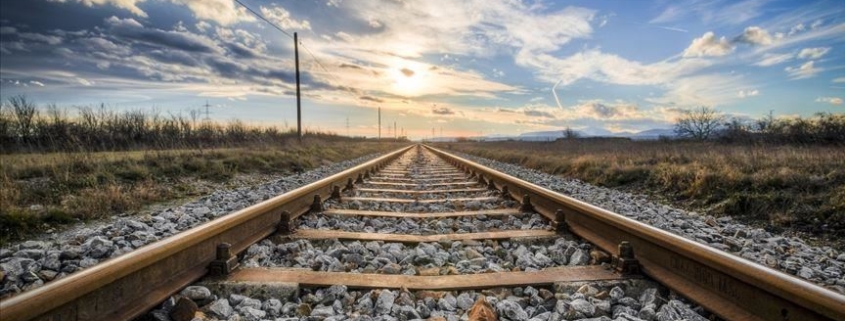The Texas and Mexico border is indisputably one of the most important for trade in North American, and the recent cancellation of a railway between the two stemming from political issues seems to be the least favorable economic option.
The TMEC Corridor is a project proposed by Mexico that would start in the port of Mazatlán, Sinaloa and go through various states in Mexico. It would then travel across the border into the United States and go north until reaching Canada.
Bloomberg previously confirmed that Texas would be losing a major railway project worth billions that was set to travel through Laredo due to Mexico moving the project in retaliation for Texas Gov. Greg Abbott’s enhanced truck inspections that led to standstills in traffic and billions of dollars lost for both countries.
One local academic shared his thoughts on the canceled plans, stating that the evidence was clear the rail line should remain through Texas, as it is the most efficient and effective thing to do for a project of this magnitude.
“I understand the political discourse going on between both parts, Texas and Mexico, but I always tell everybody let’s look at the data and for the data to show us what is going on,” said Daniel Covarrubias, Director of the Texas Center for Border Economic and Enterprise Development at Texas A&M International. “It is a project that I know will benefit the North American trade zone, but you have to understand that it is a project 100% financed by private investments.
“In the end, I do understand that Mexico, as a country, will be involved in permits, promoting and things like that. But I think that this project is going to be dictated by market forces and where logistic corridors are more efficient and by where logistic infrastructure is already in place.”
Covarrubias said one of the main reasons Mexico wants this corridor is to alleviate the transportation of goods from Asia to North America. At the moment, almost all of this trade goes through the port of Los Angeles and Long Beach.
However, Covarrubias finds it interesting Mexico is looking forward at this port when it has two others operating for such tasks including the ports of Manzanillo, Colima and the port of Lazaro Cardenas, Michoacan. He says these two compared to the one in Mazatlan have no comparison at all, as the one in Sinaloa is still in its early stages.
“If you compare Mazatlan to those ports, there is no comparison,” Covarrubias said. “Especially with what Manzanillo does as the port of Manzanillo in (Twenty-foot Equivalent Units), which is what the shipping industry uses to measure ports. There is little comparison.”
According to Covarrubias, the 2021 data on the ports indicates the port of Manzanillo does about 3.2 million TEUs a year while Lazaro Cardenas does 1.6 million, Ensenada, Baja California does 394,000 and Mazatlan does about 41,000.
“Just compare the 41,000 to the 3.2 million and 1.6 million, so that tells you the size of Mazatlan,” Covarrubias said. “Now is it a good project to make Mazatlan bigger, as the TMEC Corridor proposes a new port for the port of Mazatlan? Then yes it is good, and it can make it more viable. Will it compete with Manzanillo or Lazaro Cardenas? It is going to take years.”
Covarrubias says although the project has some good points, he sees it difficult to be done from Mazatlan and then crossing somewhere else other than into Texas to reach Canada, because the data shows Texas is the best route to take.
He said the last potential framework he saw of the project was to create an industrial complex in Mazatlan, then for the railway to pass through the state of Durango, which he says would be a task taking years to make, as it would mean the train tracks crossing through the Sierra Madre Mountains. From there, the railway would go to Frontera, Coahuila, then to Nava, Coahuila and then to the border with Texas, which would be entering in the Piedras Negras-Eagle Pass area.
According to Covarrubias, the Eagle Pass area has much train traffic. This is because the Corona brewery is located in Nava, Coahuila, just a few miles from the border and they ship all of their products mainly through railway.
Covarrubias questioned whether Laredo would have ever been the ultimate location of the railway, although it had been reported that it was. Based on his observations from a February 2022 report by the group CAXXOR — an international conglomerate with the strength to drive infrastructure projects and other real assets — he suspected it could have been ultimately heading elsewhere.
“As of February, I am still thinking that they were going to pass it through Eagle Pass,” Covarrubias said.
Even if Mexico continues with its position to move the cancelled railway to New Mexico, Covarrubias says it is going to be hard because the shortest and efficient route is through the state of Texas.
Whatever the case, Covarrubias says the project entails the rehabilitation of 167 kilometers of Mexican railways and the construction of 180 new kilometers of tracks. He estimates that would take about 15 to 20 years to complete.
He says doing it in New Mexico might even require new infrastructure on the American side, which continues to support why Texas is the best option.
“The data will show where this corridor will ultimately end up,” Covarrubias said. “If you just see right now, two of the top five railroad crossings in the United States are in the Texas border. Laredo is No. 1 and Eagle Pass is No. 4. The data just shows what the Texas-Mexico border is and what it could be, so I think that our efforts should be made to do it through this border.”
He says even among the top 10, the city of El Paso is also found while Brownsville is around No. 13. New Mexico does not have a railroad ranked until the mid-20s.
Source: Jorge A. Vela, LMT Online.



